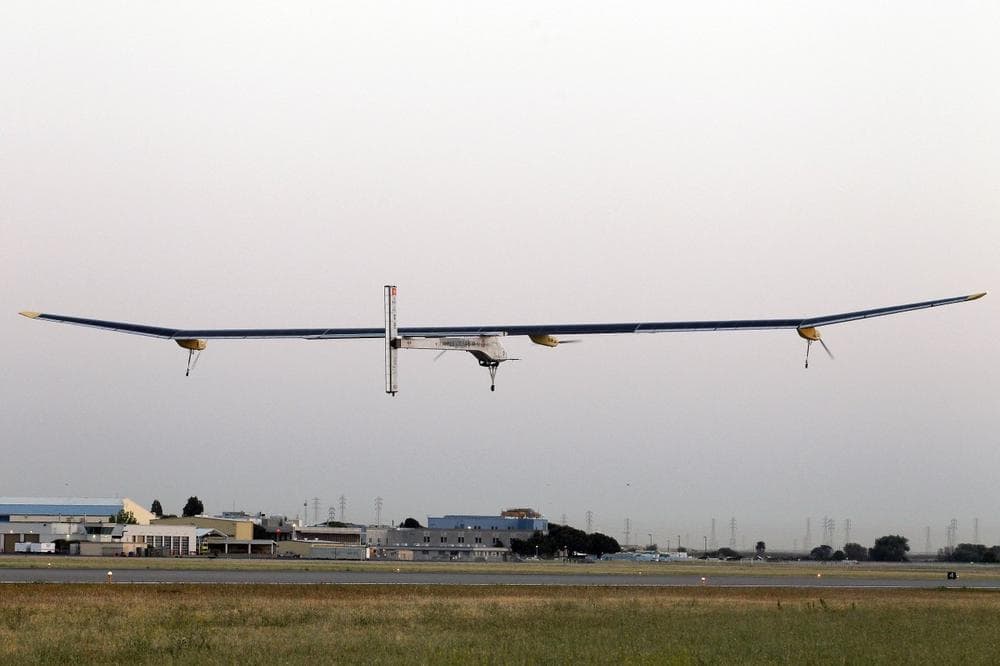Advertisement
Solar Plane Pilot: Goal Not To Fly Fast, But Fly Forever
Resume
The Solar Impulse has landed in St. Louis after a 21-hour, 562-mile flight from Dallas. That's an average speed of less than 30 miles per hour, though the trip didn't require a single drop of fuel.
The feat, by pilot Bertrand Piccard, was the third of five legs of a cross-country trip from San Francisco to New York.
The next two legs of the journey are planned for late June and early July, depending on weather conditions.
Piccard is one of two pilots flying the Solar Impulse, the world's biggest, lightest solar plane.
____Interview Highlights____

On flying slow
"The goal is not to go fast. The goal is to be able to fly forever — never need to refuel, you have no fuel on board. And the energy of the sun is actually enough during the day to not only run the four electrical motors, but also to load the batteries during the day flight so we can continue at night. This is really an interesting demonstration of what the renewable energies and clean technologies can achieve."
On the limits of the solar plane
"It's the beginning of something new and we will see where it leads us for aviation. But what we can already say is that these technologies lead us very very far for construction of houses, for lighting system. If the entire world was using the same technology as we are using on Solar Impulse, we could already divide the energy consumption of our world by two and produce half of the rest with renewable sources."
On what's next for him
"The goal is to inspire the children in the schools, the students in the universities, the people in the government to use more of these clean technologies."
Highlights from the flight to St. Louis
Guest:
- Bertrand Piccard, Solar Impulse pilot and chairman.
This segment aired on June 6, 2013.